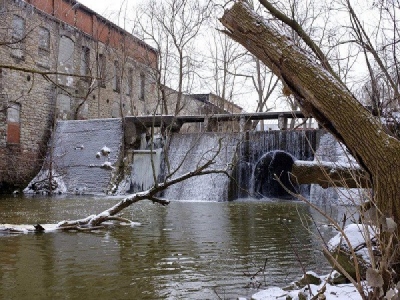
Posted on February 2, 2017
By Tim Fenster, Niagara Gazette
The EPA has finalized its plans for the second phase of cleanup at Eighteen Mile Creek — an approximately $23 million project to address soil contamination along a corridor south of Harwood Street in Lockport.
The EPA’s plan, which was presented to the public Sept. 7 and was finalized Tuesday, will utilize a combination of dredging and capping at Upson Park, former residences and closed manufacturing facilities along a one-mile stretch of the creek.
The work is expected to cause closures at Upson Park and some area roads, but residents needn’t plan for those inconveniences just yet. The design of the work plan is expected to take at least a year and a half, according to Michael Basile, EPA community involvement coordinator.
Basile could not predict how long the work itself will last, saying it is much too early in the process to know that.
“This phase is going to be done in a multifaceted approach,” Basile said.
The second phase will include dredging contaminated sediments at the former United Paperboard Company property, 62 to 70 Mill St.; the White Transportation property, 30 to 40 Mill St.; Upson Park, former residential properties on Water Street and near the dilapidated Clinton and William Street dams, which will be removed. The former Flintkote Plant property, 198 and 300 Mill St., will undergo dredging and capping.
Contaminated sediment will be moved to facilities that are permitted to handle such materials.
“There are a lot of properties, a lot of work to be done,” Basile said.
Eighteen Mile Creek was added to the Superfund National Priorities List in March 2012. Investigations found the presence of PCBs, lead and other contaminants in the sediment in and around the creek.
PCBs are believed to cause cancer and can damage the immune, reproductive, nervous and endocrine systems in humans and animals; lead can damage the nervous system and cause other health complications.
The Superfund program operates on the principle that polluters should fund the cleanups, not taxpayers. However, Basile said the creek’s history of industrial use dates back to the 1800s and dozens of industrial facilities have called the banks of the creek home. Basile said this complicates efforts to determine which companies are responsible for the pollution. Most Superfund sites, he said, are in more concentrated areas with just one or two industries.
The agency is still reviewing the information on the companies that are potentially responsible.
“We can’t point fingers until we have all the information,” Basile said.
Until the responsible parties have been identified, the plan — with its estimated cost of $23 million — will be funded with federal dollars.
In May 2016, the EPA finished the first phase of the cleanup, which included the removal of the former Flintkote building and the buyout and relocation of five families on Water Street. Basile explained that those residents had to be removed because each time the creek flooded, new contamination washed onto their yards.
During the second phase, crews will excavate the Water Street properties during the cleanup of creek sediment to avoid recontamination of both the properties and the creek.
The third phase of the cleanup, which Basile expects to be the largest phase, will address groundwater and contaminated sediment in a 14-mile stretch from Harwood Street to Olcott, where the creek empties into Lake Ontario. That phase is still being investigated.
Source: Niagara Gazette





